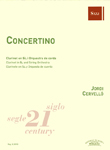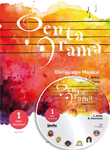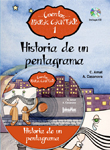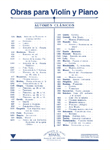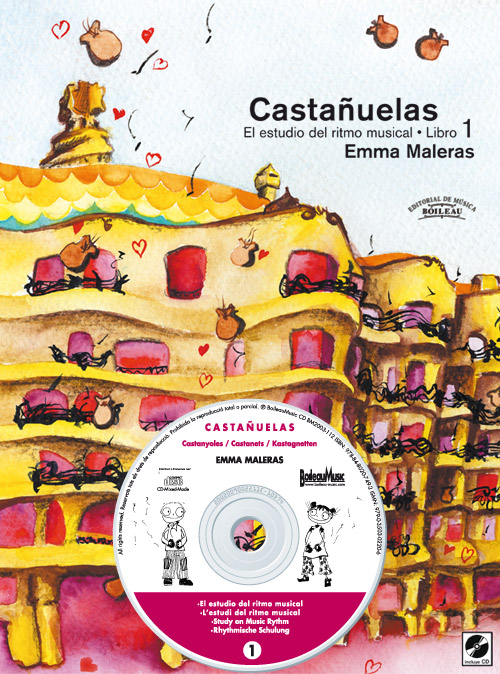CASTAÑUELAS - Libro 1
El estudio del ritmo musical
Castañuelas
MALERAS, EmmaReg.: B.3335
21,00 €
P.V.P. (VAT included 4%)
Add to cart
- Review: GRAU, Consol
- Ensemble: Solo.
- Genres: Musical education: Instrumental study repertoire; Instrument methods.
- Language: Español / Castellano
- Product format: Partituras + CD / DVD
- Difficulty level: Elementary
- Period: 2nd half S. XX - XXI
- Publishing house: Editorial Boileau
- Collection: Maleras
- Illustrator: FORNER, Ester
- No. of pages: 44
- Measure: 29,50 x 21,00 cm
- ISBN: 978-84-8020-750-8
- ISMN: 979-0-3503-0223-7
- Available in digital: No
- Available for rent: No
There is no doubt that Emma Maleras knows a great deal about everything to do with the study of rhythm. Having learned music by first studying the piano and then, in particular, by studying flamenco dance and learning to play the castanets, she has spent more than thirty years of her career teaching the castanets to several generations of pupils.
This extensive experience has helped her to create a teaching method that she has perfected throughout her teaching career. She now presents her method in this series of books, the aim of which is for pupils to achieve true rhythmic accuracy through their reading, as a separate discipline from learning to play an instrument in tune.
Due to their small size and sharp, dry sound, castanets are ideal for studying rhythm and they have proved to be useful for beginners of all ages.
By practising with these books pupils will gradually learn how rhythm works, studying aspects such as accents, measures, the values of notes and rests, as well as syncopation and tied notes. Pupils will get used to the different beats on which to come in: in time, off beat, on the up-beat and acephalous. All the studies and exercises in the collection are accompanied by music by classical composers and popular tunes, which make it enjoyable and pleasant to practice, despite the slow metronome beat that is used during the earlier lessons. These accompaniments are included on the Audio CD that comes with the book.
It is also very useful for Dance students to play the castanets, as it will quickly help them to learn the necessary accuracy of movement that this discipline requires. Instrumentalists, in general, will also gain a great deal from studying the castanets, as they strengthen the fingers due to the movement of the 3rd finger, as well as giving the ring finger and little finger considerable independence. Constant castanet work also has proven therapeutic properties, both as a prevention and as a cure.
In short, this method, which has been created and developed by Emma Maleras, helps to raise the profile of the castanets and emphasises all their benefits for music students, as well as promoting the beauty of their sound as a solo instrument, which is admired all over the world.
Iniciación para comprendrer la escritura musical propia de las castañuelas
el bigrama
numeración de los dedos
Los dedos 3º y 7º
Teoría de la música y nociones de lenguaje musical
valores de las notas
pausas o silencios
los compases compases de espera
Las castañulas y tú, uso y sostenimiento del instrumento
posición para estudiar notas pesantes
Once ejercicios diarios con notas pesantes
El compás 2/4
práctica del acento métrico del compás 2/4
cinco ejercicios para la práctica del acento métrico del compás 2/4
Ejercicio de blancas en compás de 2 tiempos
Obra núm. 1 (práctica de blancas y negras en compás 2/4): La pastorcilla y El baile de San Ferriol
El compás 4/4
Práctica del acento métrico del compás 4/4
Cinco ejercicios para la práctica del acento métrico del compás 4/4
Ejercicio para la práctica de las redondas
Ejercicio para la práctica de las blancas en compás de 4 tiempos
Obra núm. 2 (práctica de los 4 tiempos que equivalen a la redonda): Sonatina op. 36 núm. 1
El compás 3/4
Acento métrico del compás 3/4
Seis ejercicios para la práctica del acento métrico del compás 3/4
Obra núm. 3 (práctica de blancas y negras en compás 3/4): Mazurca op. 7 n. 1
La coda
Obra núm. 4 (práctica de blancas y negras en compás 2/4 con cambio de dedos en las negras): Anna-Polka op. 117
Obra núm. 5 (práctica de blancas y negras en compás 2/4 con cambio del número de dedos): con alegría por todo el mundo
El puntillo
Ejercicio para la práctica de las blancas con puntillo
Dos ejercicios en compás 4/4 con figuras variadas
Obra núm. 6 (práctica de blancas, blancas con punto y negros): minué
El calderón
Obra núm. 7 (práctica de todos los valores aprendidos en este libro): gavota
Estefania


